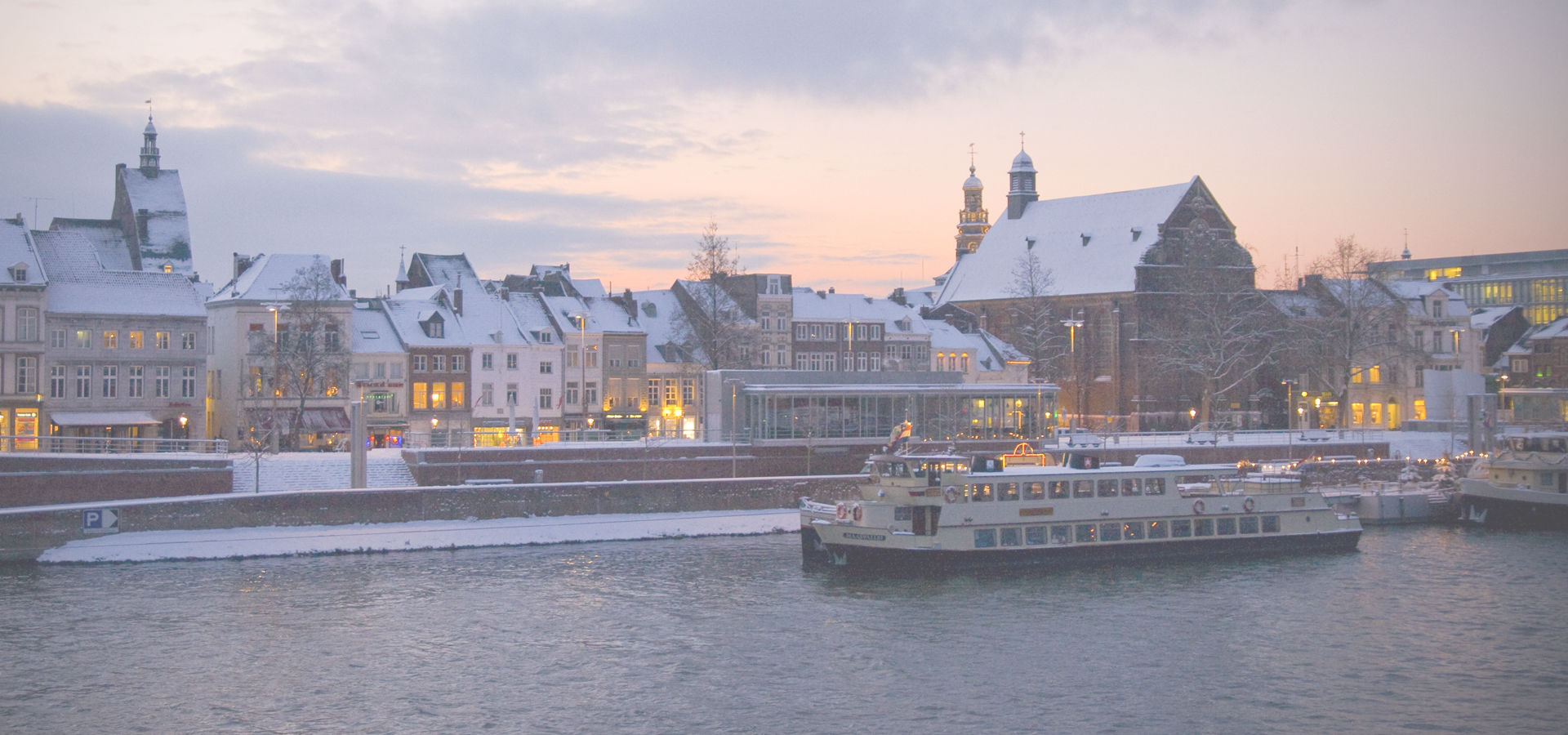Kerkrade, Limburg Province, Netherlands
🇳🇱 Kerkrade (Kirchroa; Kirkraoj; Kerkrade, Kirchrath) is a town and a municipality in the south-east of Limburg, the southernmost province of the Netherlands. It forms part of the Parkstad Limburg agglomeration.
Kerkrade is the western half of a divided city; it was part of the German town of 🇩🇪 Herzogenrath until the Congress of Vienna in 1815 drew the current Dutch-German border and separated the towns. This means that the eastern end of the city marks the international border.
History The history of Kerkrade is closely linked with that of the adjacent town of Herzogenrath, just across the German border. Herzogenrath began as a settlement, called Rode, near the river Worm (or Wurm in German) in the 11th century. In 1104 Augustinian monks founded an abbey, called Kloosterrade, to the west of this settlement.
It was called 's-Hertogenrode or 's-Hertogenrade (Dutch: the Duke's Rode) after the duchy of Brabant took control over the region; in French it was called Rolduc (Rode-le-duc). As is the case for many parts of the Southern Netherlands, the place changed hands several times in the last few centuries. It was under Spanish control from 1661, Austrian between 1713 and 1785 and French between 1795 and 1813. In 1815, when the kingdom of the Netherlands was formed (see Vienna Congress), the border was drawn through Herzogenrath, the western part being Kerkrade.
In the 18th century the monks of Rolduc began small-scale coal mines. More modern exploitation by others started in 1860, causing Kerkrade to grow significantly, especially as a consequence of the permanent settlement of mainly Southern-European miners in this Northern-European place. When the Willem Sophia mine was opened around 1900, the town grew even more rapidly, absorbing old villages like Chèvremont. In the decades following 1960, all the mines in Limburg were closed.
One of the oldest buildings in the municipality is Erenstein, a castle the origins of which lie in the 14th century.
The border One part of the border between the Netherlands and Germany runs along the middle of the street Nieuwstraat/Neustraße. The border was heavily fortified by the Germans during World War I and World War II, but because of relatively unrestricted cross-border travel within the European Union, following World War II marked only with a low wall, about 30 cm high, running along the length of the street (borders were at that time designed to be unpassable by vehicles, except at border crossing, but no fence for pedestrians). There was a separate 2-way road on each side, and cars had to pass through the official crossing points, but pedestrians could readily step over the wall (although there were signs informing of the border). In 1995, the wall was removed completely as part of the new Schengen Area agreement. Nieuwstraat/Neustraße is now a single two-way road, with the extra space now occupied with trees and bicycle lanes. The border is unmarked, and is crossed even when going round a roundabout or overtaking a vehicle.
The two towns now share some of their public services, and promote themselves as a binational "City of Eurode" for economic development purposes. They share a binational office complex which uses the Eurode name, and is built so that the border passes directly through the centre of the building's main lobby, with one wing of the building in Kerkrade and the other in Herzogenrath.
Population centres Kerkrade's outlying neighborhoods and housing developments include: • Bleijerheide • Chevremont • Eygelshoven • Gracht (Kerkrade) • Haanrade • Holz • Hopel • Kaalheide • Mucherveld • Nulland • Ondernemend gedrag • Rolduc • Rolduckerveld • Spekholzerheide • Terwinselen.
Culture: Music Every fourth year the World Music Contest, a competition for amateur, professional, and military bands, is held in Kerkrade. Also, for the last three years, the Drum Corps Europe championships have been held here.
Transport Kerkrade has 4 railway stations: • Kerkrade Centrum • Chevremont • Eygelshoven • Eygelshoven Markt.
Another station, Kerkrade West or Spekholzerheide, closed for public rail in 1988, and since 1992 it is in use by a museum-railway company, ZLSM.
Reservoir The building of a dam in the Anstel, a brook flowing west of Kerkrade, has led to the formation of a reservoir with an area of about 20 ha. This and its surroundings are very rich in flora and fauna. It is the only reservoir in the Netherlands.
Sport • Roda JC (soccer) • Powerarea (racing kartcircuit).
Europe/Amsterdam/Limburg

Kerkrade has a population of over 45,442 people. Kerkrade also forms one of the centres of the wider Parkstad Limburg agglomeration which has a population of over 252,332 people.
To set up a UBI Lab for Kerkrade see: https://www.ubilabnetwork.org Twitter: https://twitter.com/UBILabNetwork
🇩🇪 Bad Hersfeld 50.869
🇧🇪 Flemish Brabant 50.873
🏴 St Leonards-on-Sea 50.875
🏴 Waterlooville 50.88
🇧🇪 Schaarbeek 50.867
🇧🇪 Schaerbeek 50.859
Locations Near: Kerkrade 6.06667,50.8667
🇳🇱 Landgraaf 6.017,50.9 d: 5.1
🇳🇱 Heerlen 5.981,50.883 d: 6.3
🇩🇪 Heinsberg 6.094,51.058 d: 21.4
🇩🇪 Eschweiler 6.273,50.817 d: 15.5
🇩🇪 Hückelhoven 6.217,51.05 d: 22.9
🇳🇱 Roermond 5.999,51.198 d: 37.2
Antipodal to: Kerkrade -173.933,-50.867
🇹🇴 Nuku'alofa -175.216,-21.136 d: 16707.3
🇦🇸 Pago Pago -170.701,-14.279 d: 15936.4
🇼🇸 Apia -171.76,-13.833 d: 15892.4
🇵🇫 Papeete -149.566,-17.537 d: 15727
🇺🇸 Hilo -155.089,19.725 d: 11951.7
🇺🇸 Maui -156.446,20.72 d: 11872.6
🇺🇸 Maui County -156.617,20.868 d: 11860.1
🇺🇸 Wailuku -156.505,20.894 d: 11854.9